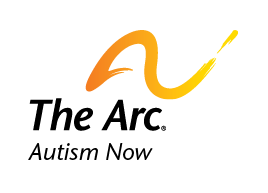Developmental Relationship-Based Approaches To Educating Children with Autism Spectrum Disorder
Contents
- “What do we mean developmental relationship-based approaches to educating children with ASD?
- What are some common developmental relationship-based approaches used in teaching children with autism spectrum disorders?
- Is there research on developmental approaches?
- Where can I go to find more information about developmental relationship-based approaches to educating children with autism?
- References
What do we mean developmental relationship-based approaches to educating children with ASD?
Developmental relationship-based or developmental social-pragmatic approaches are systematic approaches to teaching children with autism grounded in theories of human development and developmental pragmatics (Prizant, Wetherby, & Rydell, 2000). Key features of these approaches include:
- The assumption that the child is an active learner;
- Instruction in naturally occurring environments;
- Creating motivating contexts and routines;
- Building on the child’s interests;
- Development of goals based on child’s current level of development as well as his or her individual strengths and needs;
- Acknowledgement of all attempts to communicate; and
- The recognition that “learning is transactional in nature, meaning that it addresses the interdependent and reciprocal nature among the child with ASD social environment, and the interaction between the individual and the environment over time” (p. 204).
Advocates of these approaches assume that individual development and learning are complex dynamic processes that take place within a social context. Relationships are not just a desired developmental outcome; they are the means through which the growing child learns to communicate, regulate his or her emotions, and establish a foundation for complex thinking and increasingly complex social interaction. Developmental relationship-based approaches focus on enhancing relationships between caregivers and children in ways that support the child’s movement through typical levels of development.
What are some common developmental relationship-based approaches used in teaching children with autism spectrum disorders?
There are a number of systematic developmental relationship-based approaches used in the United States. These include the Developmental, Individual Differences, Relationship-Based Approach/Floortime (DIR/Floortime), Social Communication/Emotional Regulation/Transactional Supports model (SCERTS), and the Relationship Development Model (RDI).
DIR/Floortime was developed by the late Stanley Greenspan and Serena Wieder who theorized that children with autism experience biological differences that can interfere with early typical interactions with caregivers (Greenspan & Wieder, 2006). These include differences in motor planning and sensory processing. Positive engagement with caretakers is considered essential for normal development. DIR practices are designed to entice a child into positive playful interactions that can facilitate social and emotional growth. Practices are individualized and based on the child’s unique strengths and needs and level of development. In the floortime component of the approach, the parent or caregiver actually gets on the floor with the child, often following the child’s lead. The Play Project is a model for implementing DIR primarily through a model of parent training and support (Solomon, Necheles, Ferch, & Bruckman, 2007). Two large studies are currently being completed of DIR including one that looks at the effectiveness of the Play Project.
SCERTS is a comprehensive, individualized, and multidisciplinary educational approach to teaching children with autism (Prizant, Wetherby, Rubin, Laurent, & Rydell, 2006). The letters in the SCERTS acronym refer to different kinds of support that are provided. “SC” refers to supports for social and communication development. “ER” stands for “emotional regulation.” Finally, “TS” refers to “transactional supports” – a wide range of supports including those related to meeting the needs and interests of the child, emotional support, modifications and accommodations, and the use of tools such as picture schedules. As with other developmental approaches, SCERTS practitioners often follow the child’s lead. The developers of SCERTS have developed a detailed two-volume module to be used by parents and professionals in developing individualized supports to a child with autism. While many of the practices in SCERTS are research-based, there is little research on the approach as a whole. Currently, a large-scale study of SCERTS is being conducted in Florida.
RDI is a parent-led intervention developed by Dr. Steven Gutstein. According to the model’s developer, the symptoms of ASD are secondary to a single primary deficit in dynamic intelligence (Gutstein, 2009). Gutstein explains that dynamic intelligence consists of, among other things, “being able to rapidly analyze, appraise, evaluate, adapt, collaborate, compromise, and innovate” (p. 175). He also argues that children develop cognitively and emotionally as a result of guided participation with caregivers. Early biologically-based difficulties with intersubjectivity – or the ability to attune to others and share a common focus – make it impossible for children with ASD to benefit from this guidance. RDI is designed to help caregivers serve as facilitators of their children’s development in spite of the early obstacles that may derail typical development. Key components of RDI include:
(1) providing a second opportunity to develop the guided participation relationship, (2) investing in families first, (3) careful developmental construction of dynamic intelligence, and (4) biopsychosocial management of comorbid conditions. (Gutstein, 2009, p.177).
Some preliminary research has been published on RDI (Gutstein, Burgess, & Montfort, 2007) but there are, as yet, no large studies of the approach.
Is there research on developmental approaches?
Research comparing comprehensive approaches is very limited, making it impossible to show than any approach is superior to another(Reichow & Wolery, 2009; S. Rogers & Vismara, 2008) . A number of studies, however, suggest that developmental approaches may be effective for many children with ASD (Aldred, Green, & Adams, 2004; Gutstein et al., 2007; Connie Kasari, Freeman, & Paparella, 2006; C. Kasari, Gulsrud, Wong, Kwon, & Locke, 2010; Mahoney & Perales, 2005; Ratajczak, 2011; S. Rogers & Dawson, 2010; S. J. Rogers & DiLalla, 1991; Solomon et al., 2007). Currently, there are several large studies being conducted on developmental approaches.
Where can I go to find more information about developmental relationship-based approaches to educating children with autism?
Developmental, Individual Differences, Relationship-Based Approach (DIR)
- Interdisciplinary Council on Developmental and Learning Disorders – homepage or organization promoting DIR/Floortime.
- Engaging Autism: Using the Floortime Approach to Help Children Relate, Communicate and Think by Stanley Greenspan and Serena Weider (Amazon.com link).
Social Communication/Emotional Regulation/Transactional Supports model (SCERTS)
- SCERTS Model Website
- The SCERTS® Model: A Comprehensive Educational Approach for Children with Autism Spectrum Disorders (Publisher’s website)
Relationship Development Model (RDI)
- RDI Connect
- The RDI Book: Forging New Pathways for Autism, Aspergers and PDD with the Relationship Development Intervention Program
References
- Aldred, C., Green, J., & Adams, C. (2004). A new social communication intervention for children with autism: pilot randomised controlled treatment study suggesting effectiveness. Journal of Child Psychology & Psychiatry, 45(8), 1420-1430.
- Greenspan, S. I., & Wieder, S. (2006). Engaging autism: Using the floortime approach to help children relate, communicate, and think. Cambridge, ME, US: Da Capo Press.
- Gutstein, S. E. (2009). Empowering families through Relationship Development Intervention: An important part of the biopsychosocial management of autism spectrum disorders. Annals of Clinical Psychiatry, 21(3), 174-182.
- Gutstein, S. E., Burgess, A. F., & Montfort, K. (2007). Evaluation of the relationship development intervention program. Autism, 11(5), 397-411.
- Kasari, C., Freeman, S., & Paparella, T. (2006). Joint attention and symbolic play in young children with autism: a randomized controlled intervention study. Journal of Child Psychology & Psychiatry, 47(6), 611-620.
- Kasari, C., Gulsrud, A. C., Wong, C., Kwon, S., & Locke, J. (2010). Randomized controlled caregiver mediated joint engagement intervention for toddlers with autism. Journal of Autism & Developmental Disorders, 40(9), 1045-1056.
- Mahoney, G., & Perales, F. (2005). Relationship-focused early intervention with children with pervasive developmental disorders and other disabilities: A comparitive study. Journal of Developmental and Behavioral Pediatrics, 26(2), 77-85.
- Prizant, B., Wetherby, A., Rubin, E., Laurent, A., & Rydell, P. (2006). The Scerts Model. Baltimore: Brooks Publishing.
- Prizant, B., Wetherby, A. M., & Rydell, P. (2000). Communication intervention issues for children with autism spectrum disorders. In A. M. Wetherby & B. Prizant (Eds.), (pp. 193-224). Autism spectrum disorders: A transactional developmental perspetive: Brookes Publishing Company.
- Ratajczak, H. V. (2011). Theoretical aspects of autism: biomarkers–a review. Journal of Immunotoxicology, 8(1), 80-94.
- Reichow, B., & Wolery, M. (2009). Comprehensive synthesis of early intensive behavioral interventions for young children with autism based on the UCLA Young Autism Project model. Journal of Autism and Developmental Disorders, 39(1), 23-41.
- Rogers, S., & Dawson, G. (2010). Early Start Denver Model for young children with autism: Promoting language, learning and engagement. New York: The Guildford Press.
- Rogers, S., & Vismara, L. (2008). Evidence-based comprehensive treatments for early autism. Journal of Clinical Child and Adolescent Psychology, 37(1), 8-38.
- Rogers, S. J., & DiLalla, D. L. (1991). A comparative study of the effects of a developmentally based instructional model on young. Topics in Early Childhood Special Education, 11(2), 29.
- Solomon, R., Necheles, J., Ferch, C., & Bruckman, D. (2007). Pilot study of a parent training program for young children with autism: The PLAY Project Home Consultation program. Autism: The International Journal of Research & Practice, 11(3), 205-224.

